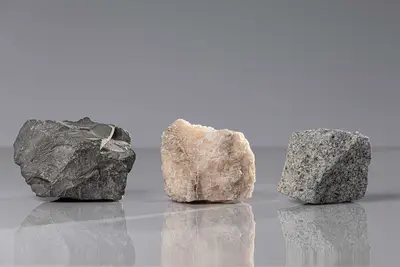
Morsleben repository
At the Morsleben repository, there are almost 37,000 cubic metres of low- and intermediate-level radioactive waste stored at a depth of some 480 metres. Morsleben is the first German repository that is to be decommissioned in accordance with nuclear law and with the waste left in place. This task is the responsibility of the Bundesgesellschaft für Endlagerung mbH (BGE).
To that end, the BGE is testing new techniques underground, as well as carrying out stabilization work in the mine and keeping it open. The licensing procedure that is necessary for decommissioning is running in parallel to this work, and the licence has not yet been granted. The central plank of the licensing procedure is the long-term safety demonstration.
On this page:
Morsleben is located in Saxony-Anhalt in the immediate vicinity of the Lower Saxony state border and Helmstedt, the nearest larger town. Miners extracted potash and rock salt in the Marie and Bartensleben pits from 1898 to 1969. In the last two years of World War II, arms production was carried out underground by forced labourers, sometimes in inhuman conditions. The Marie pit was used for chicken production from 1959 to 1984 and as an interim storage facility for toxic waste between 1987 and 1996. At the end of 1996, the approximately 20,000 drums of toxic waste were removed from the mine again.
Morsleben repository explained in 90 seconds (english subtitle)
More information
History of the Morsleben repository Actors and tasks Radioactive waste in the Morsleben repository Decommissioning of the Morsleben repositoryInformation centre

The Morsleben information centre is located in the immediate vicinity of the repository. The centre hosts an exhibition and organises tours, lectures and events on a regular basis. Visiting the information centre and mine tours are free of charge.
Final disposal of radioactive waste
At the start of the 1970s, the emplacement of low- and intermediate-level radioactive waste began in the Bartensleben pit, initially on a trial basis. This waste arose above all from the use of nuclear power plants in the former GDR. High-level radioactive waste was not brought to Bartensleben and was instead transported back to the former Soviet Union.
It was not until 1986 that a licence was granted for indefinite, permanent operation as a repository. To this day, this licence forms the basis for operating the facility, which is being kept open until decommissioning. Following reunification, the Federal Republic of Germany used the facility as a pan-German repository from 1994 to 1998, emplacing further low- and intermediate-level radioactive waste. This practice was the subject of a successful legal challenge by the environmental organisation BUND. The former operator, the Federal Office for Radiation Protection (BfS), subsequently discontinued emplacement before the legal disputes came to an end
Planned decommissioning
The decommissioning concept includes three key measures: the construction of sealing structures underground, the extensive backfilling of the mine with salt concrete, and the sealing of the Marie and Bartensleben pits. The decommissioned repository must safely contain the radioactive waste on a permanent basis and should be maintenance-free. As it is still impossible to rule out the inflow of water (saline solution) at a later point in time, the miners are testing special sealing structures underground. These structures are intended to separate the radioactive waste from the rest of the pit in the future and therefore also to isolate it from the environment in this event.
Following completion of the decommissioning work, the nuclear waste will be contained at depth by concrete and salt. When this aim will be achieved depends on the licence that is yet to be issued. If the licence is granted, the decommissioning process itself will take approximately 15 to 20 years
Brief information on the Morsleben repository
- There are around 37,000 cubic metres of low- and intermediate-level radioactive waste stored in the Morsleben repository
- The repository is to be decommissioned with the nuclear waste left in place
- The final licence for decommissioning is yet to be issued
- The BGE is keeping the mine open and making preparations for decommissioning
- Miners are stabilising the mine and testing new techniques for final disposal

Locking structures should also protect the radioactive waste – for example, against the ingress of water. New buildings are already being tested.










